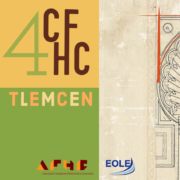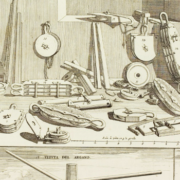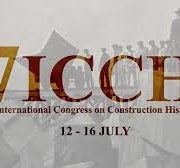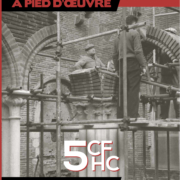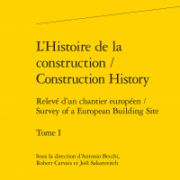Call for Abstracts in the context of the 8ICCH
Thematic Session 9 – How might Prosopography help Construction History?
by Michela Barbot, Robert Carvais, Emmanuel Château-Dutier, Valérie Nègre (France – Canada)
Deadline: Monday May 15 2023
The 8th International Congress on the History of Construction to be held in June 2024 in Zurich (Switzerland) has selected our proposal below as one of its session. We are therefore issuing this call for papers in order to feed this session. Many construction historians – sometimes without knowing it – work on groups of actors, whether they belong directly to the world of construction (craftsmen, architects, engineers) or indirectly (lawyers, economists, clients). The constitution of a ‘collective biography’ and the analysis of this wide range of information make it possible to identify the salient characteristics of these groups of actors, both in terms of the relationships they develop with each other and with the outside world, and in terms of their evolution over time and space. We seek to understand what this method could contribute to the history of construction, understood as a field of study.
Proposals should be submitted directly to the 8ICCH website, indicating the session for which it is intended TS 9.
Abstracts must be submitted in English and must not exceed 400 words. All abstracts will be reviewed and selected for presentation by at least two members of the 8ICCH Scientific Committee, which includes the world‘s most respected researchers in the field. All papers will be published in an edited open access proceedings volume and will be available at the congress and as print-on-demand hardcopies.
Abstracts must be submitted exclusively via the website www.8icch.ethz.ch. Abstract submission will open on March 15, 2023.
Abstracts submitted by other ways of communication (paper, e-mail, etc.) cannot be considered. When submitting your abstract, please indicate the relevant thematic sessions or general conference topics as listed in the PDF below or on www.8icch.ethz.ch
Abstracts have to be submitted until April 30, 2023 (midnight CET). Delayed submissions cannot be considered. The decision of the scientific committee will be announced by August 1, 2023. Full papers are expected to be submitted by November 2023. Full papers will again be reviewed by members of the scientific committee. Only papers fully meeting the scientific and language quality criteria will be accepted. Please note that only papers presented in person at the conference will be included in the proceedings.
Stay informed about 8ICCH by regularly visiting our conference website www.8icch.ethz.ch! We look forward to your contributions and to meeting you in Zurich in June 2024.
I hope many of you will be interested.
Description of the thematic session
As the study of the shared features of a community, prosopography “aims to identify the common characteristics of a group of historical actors based on systematic observation of their lives and careers. » (Delpu 2015). In recent years, digital technology has transformed the use of this type of data by increasing the possibilities for calculating and searching sources. International projects based on the use of prosopographical data include Mapping the Republic of Letters (with the project on the British Architects on the Grand Tour in Eighteenth-Century Italy by Giovanni Ceserani), the study of the Origins of the Modern State in Europe (Jean-Philippe Genet), the history of education (Emmanuel Picard), the book trade (Sabine Juratic), and the Tudor Network (Ruth Ahnert).
In the field of history of architecture, Werner Szambien advocated the production of a prosopography of architects as early as 1988. This project was never pursued, despite the continuation of research carried out with the Allgemeines Künstlerlexikon, and several abandoned initiatives in France. The prosopographical approach mainly involves moving from biography to “a vision that allows collective portraits to emerge, by going back and forth between individual and collective careers” (Bougeard and Prigent 2016). Thus, as practised in economic and social history, prosopography has both a quantitative and a sociological dimension.
Prosopography enables the study of careers, trajectories, life cycles and longitudinal studies to identify collective histories (Lemercier and Picard 2012). Which is why this historical method seems particularly relevant to the field of construction history. In particular, this approach
1) Highlights the history of the actors’ career paths with respect to each other and to their communities and surrounding institutions;
Construction mobilises a whole series of actors who form complex groups, often strongly endogamous. Individual trajectories, guild connections and family dynasties are all phenomena that prosopography makes it possible to study and bring to light. In the field of the history of construction, various bodies of professional actors can be studied: craftsmen, architects, contractors, etc. They may belong to different communities, or different groups. They may belong to regulated or free communities, regulated professions, or administrative organizations or learned societies: royal or republican administrations, academies, jurisdictions, school promotions, unions or professional orders are all essential strata for the study of construction. Prosopography can highlight new aspects, help identify sub-groups of actors, and also go beyond institutional history (normative or regulatory) by looking at the social structure.
2) Goes beyond heroic figures to look at all the actors;
The history of construction particularly requires an interest in the day-to-day regularities of the trades and the way certain groups of actors distinguish themselves or develop competitive relationships. To achieve this, it is necessary to use representative or complete corpora. If we wish to analyse those who practiced architecture in the 17th and 18th centuries, those master masons who were building contractors must be studied alongside all those who bore the title of architect. Each piece of information remains a single datapoint frozen in time. It must be given depth. Each individual may have received more than one training course, married more than once, lived at more than one address, and exercised more than one function and trade.
3) Can be used for international comparative collective surveys.
After one-off surveys, the field of construction history now needs to address these issues in a comprehensive manner. The advent of digital technologies makes it possible to adopt shared methodologies and tools flexible enough to serve both the needs of a project and to pool information for comparative approaches. Describing results in terms of quantity or quality (normal or exceptional) is not sufficient to fully measure and compare results. How then to deal with the volume and disparity of information in the archives? By building comparable sub-corpora, perhaps through sampling?
A number of works on the history of construction already use these methods (see bibliography below). This session is intended to take stock of what exists, compare methods and approaches and develop avenues for future international collaborative projects. Proposals may therefore relate to case studies that have been or are being carried out, as well as to methodological and technical considerations. We have highlighted the people likely to participate in this session if it is selected.
Selected Bibliography
Construction History and prosopography
Barke, Michael, and Peter J. Taylor. 2022. « Narrative heroes and civic builders in Newcastle city region during the nineteenth century ». Urban History 49 (1): 88‑107. https://doi.org/10.1017/S0963926820001042.
Cufi Jou, Maria. 2021. « Construction Trades in the Second half of the 18th century:An analysis through the registre d’Hipoteques ». In V Conference of Pre-doctoral Researchers Abstract Book. 207‑8. Universitat di Girona: Sola i Puig, Miquel. https://dugi-doc.udg.edu/handle/10256/20588.
Guerzoni, Guido, et Guido Alfani. 2007. « Court History and Career Analysis: A Prosopographic Approach to the Court of Renaissance Ferrara ». The Court Historian 12 (1): 1‑34. https://doi.org/10.1179/cou.2007.12.1.001.
Idoux, Viviane. 2015. « L’administration des Bâtiments du Roi sous les règnes de Louis XV et Louis XVI ». Thèse de doctorat, France : Université de Versailles-Saint-Quentin-en-Yvelines. http://www.theses.fr/2015VERS022S/document.
Isaac, Catherine. 2021. « Entre prosopographie et micro-histoire : l’apport de l’approche biographique à l’histoire des ingénieurs des États de Languedoc au XVIIIe siècle ». Les Cahiers de Framespa. e-STORIA, no 37 (juin). https://doi.org/10.4000/framespa.10933.
Lutkin, Jessica. 2005. « The London Craft of Joiners, 1200-1550 ». Medieval Prosopography 26: 129‑64. https://www.jstor.org/stable/44946468.
Marttila, Juuso. 2012. « Monopolizing the Property of Skill: A Prosopographic Analysis of a Finnish Ironworks Community ». International Review of Social History 57 (3): 417‑46. https://doi.org/10.1017/S0020859012000508.
Macleod, Christine, and A. Nucolari. 2005. « The Ingenious Crowd: A Critical Prosopography of British Inventors, 1650-1850 ». https://www.researchgate.net/publication/4869012_The_Ingenious_Crowd%27_A_Critical_Prosopography_of_British_Inventors_1650-1850.
McEnerney, James. 2022. « The Social Network of Early American Architecture: A Network Analysis of Early Architectural Training In and Out of the Lowcountry ». Theses.
McWilliam, Robert, et Mike Chrimes, dir. 2014. Biographical dictionary of civil engineers in Great Britain and Ireland. London: ICE publ.
Omère, Sophie. 2021. Jeux d’eau à La Granja. Les fontainiers français en Espagne au XVIIIe siècle. Histoire, sciences, techniques et sociétés. Paris : Presses des Mines.
Roubaud-Quashie, Guillaume. 2015. « “ Et l’acier fut trempé ” ou les dirigeants de l’Union de la jeunesse républicaine de France saisis par la prosopographie ». Hypotheses 18 (1) : 319‑16. https://www.cairn.info/revue-hypotheses-2015-1-page-319.htm.
Stephenson, Judy Z. 2020. Contracts and Pay: Work in London Construction 1660–1785. Palgrave Studies in Economic History. Cham: Springer International Publishing. https://doi.org/10.1007/978-3-319-57508-7.
Szambien, Werner. 1988. « Pour une prosopographie des architectes français ». Histoire de l’art 1 (1) : 97‑100. https://doi.org/10.3406/hista.1988.1634.
On Prosopography
Akoka, Jacky, Isabelle Comyn-Wattiau, Stéphane Lamassé, et Cédric Du Mouza. 2021. « Conceptual modeling of prosopographic databases integrating quality dimensions ». Journal of Data Mining & Digital Humanities Special Issue on Data Science…: 5078. https://doi.org/10.46298/jdmdh.5078.
Bougeard, Christian, et François Prigent. 2017. La Bretagne en portrait(s) de groupe. Les enjeux de la méthode prosopographique (Bretagne, XVIIIe-XXe siècle). Histoire. Rennes : Presses universitaires de Rennes. https://hal.archives-ouvertes.fr/hal-02917184.
Champomier, Emmanuelle. 2019. « Apports, limites et enjeux méthodologiques d’une approche prosopographique de la critique cinématographique ». Dans Critique(s) d’art : nouveaux corpus, nouvelles méthodes. Sous la direction de Marie Gispert et Catherine Méneux, 53‑65. Paris : HiCSA.
Charle, Christophe. 2015. « Prosopography (collective biography) ». In International encyclopedia of the social & behavioral sciences. Sous la direction de James D Wright, 2e édition, 12236‑41. Amsterdam: Elsevier. http://www.public.eblib.com/choice/PublicFullRecord.aspx?p=1963260.
Delpu, Pierre-Marie. 2015. « La prosopographie, une ressource pour l’histoire sociale ». Hypotheses 18 (1) : 263‑74. https://www.cairn.info/revue-hypotheses-2015-1-page-263.htm.
Fokkens, Antske, Serge ter Braake, Ronald Sluijter, Paul Longley Arthur, et Eveline Wandl-Vogt, dir. 2018. Proceedings of the Second Conference on Biographical Data in a Digital World 2017, Linz, Austria, November 6-7, 2017. Vol. 2119. CEUR Workshop Proceedings. CEUR-WS.org. http://ceur-ws.org/Vol-2119.
Genet, Jean-Philippe. 2013. « Les théologiens parisiens : une approche par l’analyse factorielle ». Dans Mesure et histoire médiévale. Sous la direction de Société des historiens médiévistes de l’enseignement supérieur, 135‑52. Éditions de la Sorbonne. https://doi.org/10.4000/books.psorbonne.28568.
Genet, Jean-Philippe. 1988. « L’informatique au service de la prosopographie : PROSOP ». Mélanges de l’École française de Rome 100 (1) : 247‑63. https://doi.org/10.3406/mefr.1988.2972.
Grange, Cyril, et Michael Houseman. 2008. « Objets d’analyse pour l’étude des réseaux de parenté : une application aux familles de la grande bourgeoisie juive parisienne XIXe-XXe siècles ». Annales de démographie historique, no 2 (116) : 105‑44. https://www.jstor.org/stable/26251075.
Hotson, Howard, et Thomas Wallnig, dir. 2019. Reassembling the Republic of Letters in the Digital Age: Standards, Systems, Scholarship. Göttingen: Göttingen University Press. https://doi.org/10.17875/gup2019-1146.
Hyvönen, Eero, Petri Leskinen, Minna Tamper, Heikki Rantal, Esko Ikkala, Jouni Tuominen, et Kirsi Keravuori. 2019. « BiographySampo – Publishing and Enriching Biographies on the Semantic Web for Digital Humanities Research ». In The semantic web. Sous la direction de ESWC. Portorož, Slovenia, June 2-6, 2019: Springer.
Laurens, Sylvain, et Francis Marchan. 2012. « Traiter des « masses » de données prosopographiques par la numérisation d’annuaires – Espoirs et vertiges ». Bulletin of Sociological Methodology/Bulletin de Méthodologie Sociologique 115 (1) : 53‑65. https://doi.org/10.1177/0759106312445708.
LAMOP, et Jean-Philippe Genet. s. d. « Studium Parisiense. Base de données prosopographique des universitaires parisiens ». Consulté le 12 septembre 2019. http://lamop-vs3.univ-paris1.fr/studium/.
Le Digol, Christophe. 2019. « L’enquête prosopographique. Enjeux de méthode ». Dans Le sujet communiste : Identités militantes et laboratoires du « moi ». Sous la direction de Claude Pennetier et Bernard Pudal, 227‑39. Histoire. Rennes : Presses universitaires de Rennes. http://books.openedition.org/pur/50578.
Lemercier, Claire, et Emmanuelle Picard. 2012. « Quelle approche prosopographique ? » Dans Les uns et les autres. Biographies et prosopographies en histoire des sciences. Sous la direction de Laurent Rollet et Philippe Nabonnaud, 605‑30. Presses Universitaires de Nancy ; Éditions Universitaires de Lorraine. https://halshs.archives-ouvertes.fr/halshs-00521512/document.
Lemercier, Claire, et Claire Zalc. 2007. Méthodes quantitatives pour l’historien. Repères 507. Paris : la Découverte. http://catalogue.bnf.fr/ark:/12148/cb41204285p.
Leskinen, Petri, Eero Hyvonen, et Jouni Tuominen. 2017. « Analyzing and Visualizing Prosopographical Linked Data Based on Biographies ». In BD-2017 Biographical Data in a Digital World 2017. 6. Linz, Austria, November 6-7, 2017. http://ceur-ws.org/Vol-2119/paper7.pdf.
Miquel, Maryvonne, Thierry Pécout, et Anne Tchounikine. 2020. « Modélisation de données pour une base de données prosopographique ». Dans Les officiers et la chose publique dans les territoires angevins (XIIIe-XVe siècle) : vers une culture politique ? : Gli ufficiali e la cosa pubblica nei territori angioini (XIII-XV secolo): verso una cultura politica?. Collection de l’École française de Rome. Rome : Publications de l’École française de Rome. http://books.openedition.org/efr/7457.
Popova, Olga V. 2015. « Établir une prosopographie des notables urbains en Mésopotamie au Ier millénaire avant J.-C. » Hypotheses 18 (1) : 275‑86. https://www.cairn.info/revue-hypotheses-2015-1-page-275.htm.
Schwartz, Daniel L., Nathan P. Gibson, et Katayoun Torabi. 2021. « Modeling a Born-Digital Factoid Prosopography using the TEI and Linked Data ». https://oaktrust.library.tamu.edu/handle/1969.1/192423.
Stone, Lawrence. 1971. « Prosopography ». Daedalus 100 (1) : 46‑79. https://www.jstor.org/stable/20023990.
Vincent, Marie-Bénédicte. 2004. « La prise en compte de plusieurs générations dans la méthode prosopographique : l’exemple des hauts fonctionnaires prussiens sous l’Empire et la république de Weimar ». Genèses 56 (3) : 117‑30. http://www.cairn.info/revue-geneses-2004-3-page-117.htm.
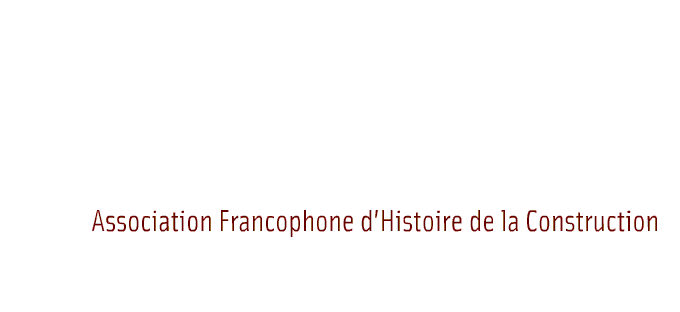
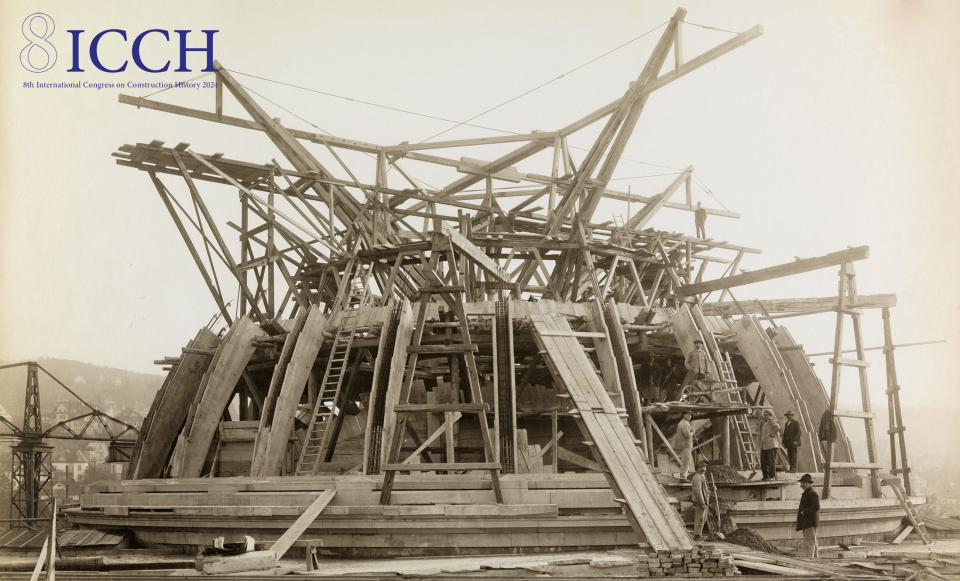
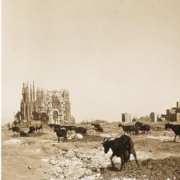 © Chantier de la Sagrada Familia, Barcelone
© Chantier de la Sagrada Familia, Barcelone 